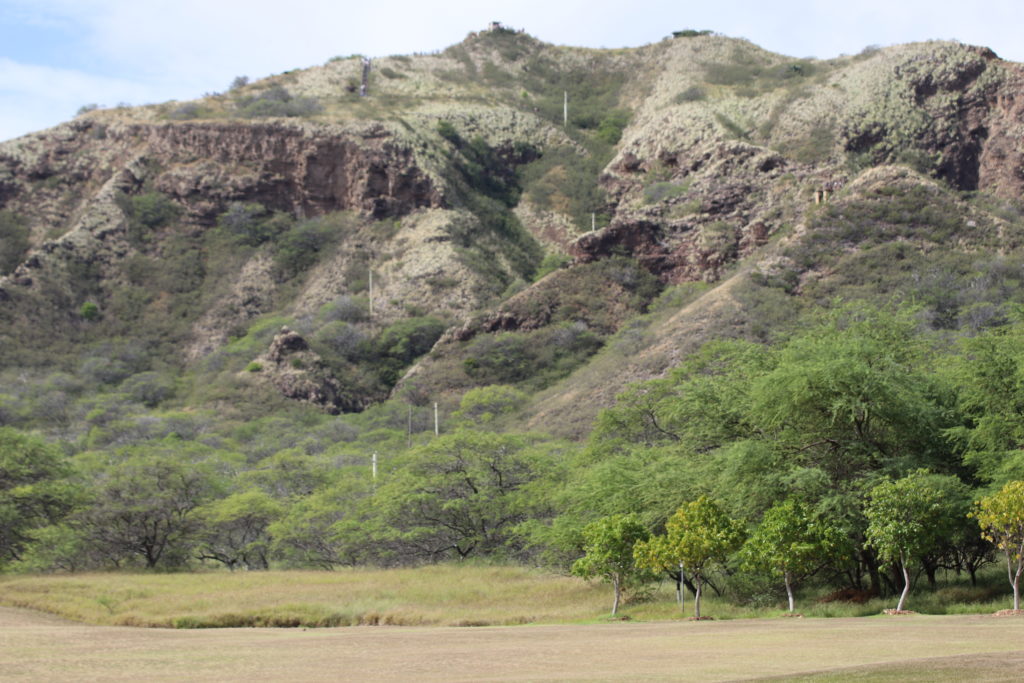
On February 28, Curt Cottrell, administrator for the Department of Land and Natural Resources’ Division of State Parks, asked the Land Board for permission to hold public hearings on proposed fee increases for parking, entry, and facility uses.
He noted that his division had not increased fees in 20 years. “This is a long time in coming for us. We’re charging fees established 20 years ago. …We haven’t done a substantive fee change since that time,” he told the board.
With aid from a legal fellow and deputy attorney general Colin Lau, the division proposed new fees that Cottrell said would greatly increase the division’s ability to repair, maintain, and secure its parks.
“I really wish we would have done that several years ago. Not having a legal fellow, it was really challenging to get the capacity to do this. Once tourism popped, there was a lot of revenue being hemorrhaged over the last several years that we could have collected to have enhanced our operations,” he said.
He noted that 80 percent of his division’s $14 million annual budget goes to salaries or lifeguard contracts, leaving just $2.8 million for everything else.
Last year, the division spent $536,000 on repair and maintenance, which is just a small fraction of its $40 million backlog. Cottrell added that it is also contracting more and more with the department’s enforcement officers to deal with after-hours security issues.
“Now, with charging for parking and entry, we generate $2.9 million a year … $1 to walk in, $5 to drive in, staggered fees for buses,” he said. With the new fees — which he assured the board would not be applied to all parks — “we stand to make, top-end, minus coronavirus and natural disaster, we could get up to $8.7 million in revenue just from parking and entry, just from a modest increase from $1 to $5, $5 to $10 and an increase in the bus tour calculations,” he said. A proposed 25 percent increase in camping fees would also help bump up total revenue by about half a million, he estimated.
The rule package did not exclusively seek fee increases. In the case of Diamond Head State Park on O‘ahu, which is the only state park where both residents and non-residents pay an entry fee, the division proposes eliminating the fee for residents. Cottrell explained that the income generated from the resident fee there is minimal. Even with the elimination of that fee, he added that income under the new rules, if adopted, was expected to increase to $4 million a year. “That money can be spread throughout the park system,” he said.
With regard to parks that are currently free to the public that would not be under the proposal, he said that because his division would need to hire a contractor to manage fee collection, the park would need to have enough traffic for the contractor to make money. He said that any such contract to set up a parking and entry scheme similar to what’s at Iao, Waimea, Koke‘e, Akaka Falls, or Diamond Head would need to be approved by the Land Board.
He added that his division will be focusing on places such as Wainapanapa in East Maui, which, similar to Ha‘ena on Kaua‘i, has seen an “explosive amount of tourism and commercial use in a community where we have a park unit that’s attracting them.”
And just as with Ha‘ena State Park, his division will be looking to reduce the patronage. “In some of these parks, we’re going to be trying to shrink down the use to find a more reasonable balance between tourism and community value,” he said. If the Legislature grants the division’s request to increase the spending ceiling on its special fund by $2 million, and if the fee increases go into effect, “for us it’ll be drinking out of a firehose. We’re not used to having this kind of operating capital,” he said.
If everything goes as planned, the division will be investing in the quality of its camp sites and hiring Division of Conservation and Resource Enforcement officers for “special duty ops” regarding the homeless, illegal camping, and itinerant taxi drivers at Diamond Head, he said.
Cottrell cautioned that natural disasters may greatly affect the income projections.
In 2018, Kaua‘i was hit with devastating rains and suffered massive flooding. As a result, “we hemorrhaged about $800,000 of camping revenue at Kalalau because we had to stay closed for 14 months,” he said. The income projections he presented are “all going to be subject to fluctuations based on landslides, storms … The coronavirus is a new type of issue that may have some incalculable impacts on our ability as time goes by,” he said.
The board approved the request to take the rules to public hearings.
A few weeks later, on March 18, the DLNR announced the closure of several parks under its jurisdiction to prevent the spread of the coronavirus. Two days later, it closed all of them.
Cottrell said in a March 20 press release, “many, many people are simply ignoring gates and signs and choosing to put themselves and any others close-by at risk of contracting COVID-19. This unprecedented step is being taken in the interest of public health and safety and we really encourage people to find alternate activities that do not expose themselves and others to the virus.”
— Teresa Dawson

Kevin Kennedy
Its time for Curt Cottrel and his staff to get their act together when it comes to Big Island state parks. Hapuna is our Big Island gem, come on 41 feeble attempts to repair water lines. If its a matter of finances, then raise entry fees to state parks. 10.00 for tourists , they have no problem paying 9.00 for a beer, 10.00 in parks not to much. How about an annual pass for residents. I live in North Kona, I would pay a reasonable fee to maintain our State Parks.